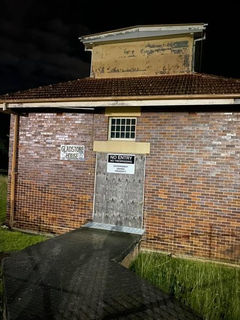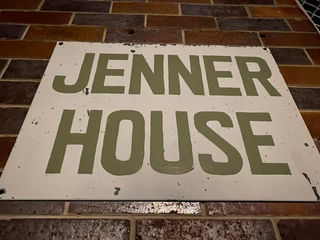

There Was Once an Asylum



This site not only provides an overview of mental health history and its implications for Goodna, but also explores the complex relationship between memory and history
There are stories we may never know, but this site uncovers the history, revealing the layers of understanding that form the foundation of the present.
It is done in a way that honours the patients, clients, and the people.
Gladstone House, Jenner House, & Kelsey House
All were built in 1936
Gladstone House, Jenner House, and Kelsey House (former male patient wards 6, 7, 8) are three highly intact, almost identical buildings standing in a curving line west of Fleming House.
Purpose-built as male ward buildings, they express their original use through architectural details and features designed for patient care and reflect the principles of moral treatment. Surrounded by lawns, they face northeast toward the Recreation Grounds, and their primary access is on this side of the buildings.
In 2020, they are vacant and had most later fabric removed.
Features of Gladstone House, Jenner House, and Kelsey House of state-level cultural heritage significance also include:
• Massing, form, construction: one-storey freestanding brick structures with timber-framed front verandahs, floors, and hip roofs
• Symmetrical plan forms: main C-shaped wing around a front courtyard (accommodates central communal dining room and patient dormitories at either end); short angled rear wings (single patient rooms on either side of a central hallway); and a central rear services wing (kitchen, bathroom)
• Architectural detailing for incarcerated patient management (security, safety, hygiene, moral treatment): orientation and views out from dining rooms and dormitories to the Recreation Ground and its cricket oval efficient and logical room layouts; wards of dormitories and single rooms; communal ablutions for males only; centralised supplies stores; soiled clothes hatch in lavatory (blocked over) through to small storeroom accessed from rear o robust and cleanable/hygienic materials and finishes: face brick exterior walls; concrete sills and lintels; plaster interior walls; concrete floors (verandah, kitchen, bathrooms); timber floors (dormitories, single patient rooms, dining room); ceramic wall tiles (kitchen); metal sheet-and-batten ceiling linings; terracotta tile roof cladding; cast iron and metal water goods o measures for safety, security, and observation of patients: rounded and coved external and internal wall and floor corners; observation doors and windows; toilet cubicles without doors high levels of natural light and ventilation to the interior: spacious rooms with high ceilings; battened eaves; large glazed and vented roof lanterns
• Original joinery: multi-paned windows (fixed and operable), some with hinged sills to facilitate both sashes sliding down into a wall pocket; internal doors (glazed and solid); moulded architraves; board-lined verandah ceilings and valances
• Courtyards: grass; concrete spoon drains
(garden beds, paths, and vegetation in courtyards are not of state-level cultural heritage significance).
























